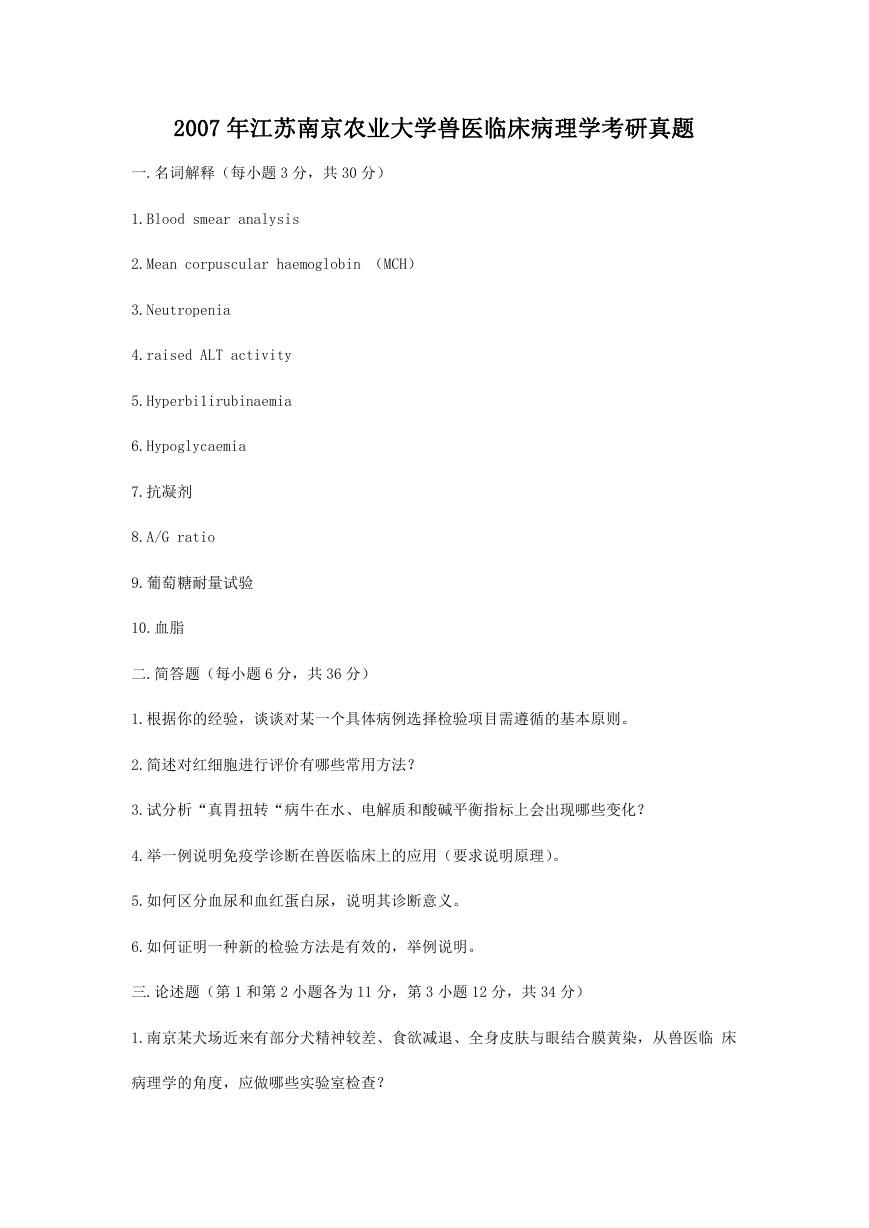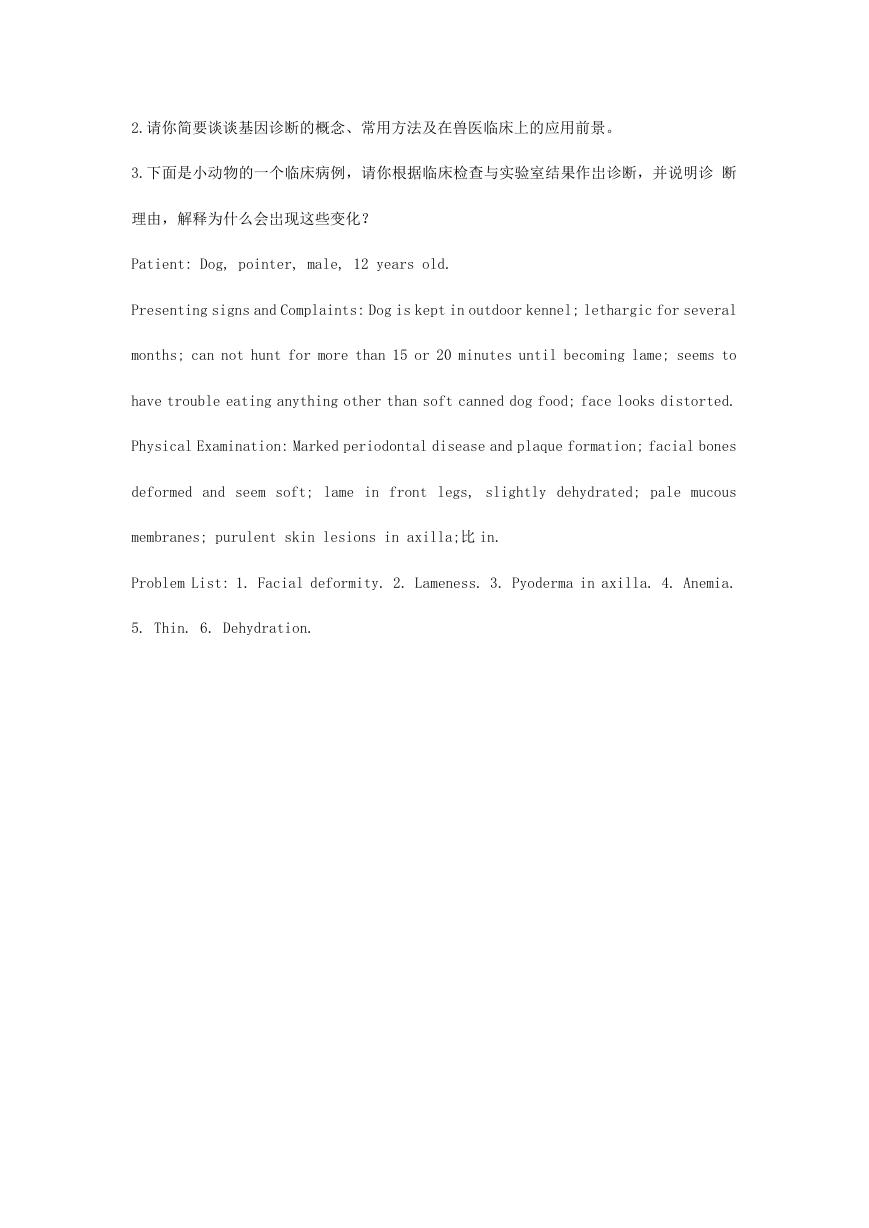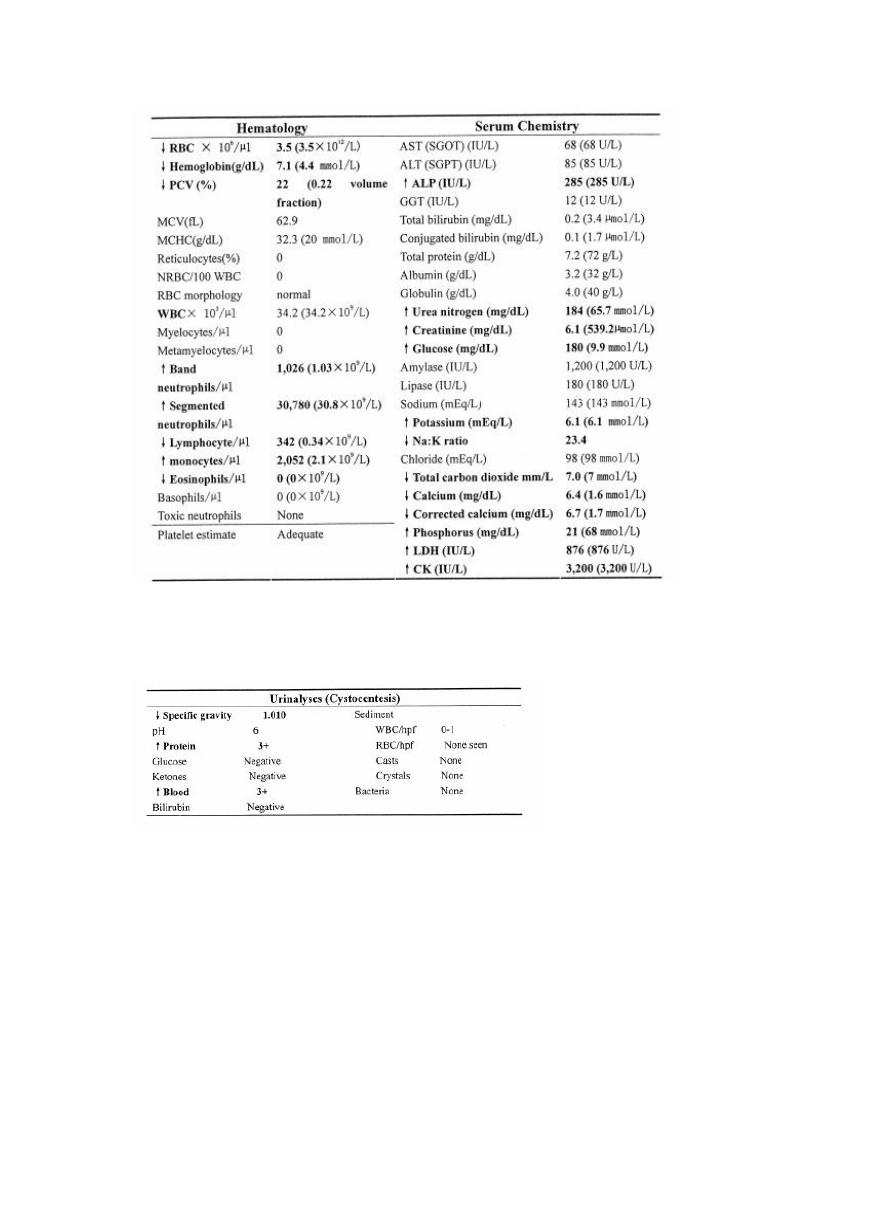2007 年江苏南京农业大学兽医临床病理学考研真题
一.名词解释(每小题 3 分,共 30 分)
1.Blood smear analysis
2.Mean corpuscular haemoglobin (MCH)
3.Neutropenia
4.raised ALT activity
5.Hyperbi1irubinaemia
6.Hypoglycaemia
7.抗凝剂
8.A/G ratio
9.葡萄糖耐量试验
10.血脂
二.简答题(每小题 6 分,共 36 分)
1.根据你的经验,谈谈对某一个具体病例选择检验项目需遵循的基本原则。
2.简述对红细胞进行评价有哪些常用方法?
3.试分析“真胃扭转“病牛在水、电解质和酸碱平衡指标上会出现哪些变化?
4.举一例说明免疫学诊断在兽医临床上的应用(要求说明原理)。
5.如何区分血尿和血红蛋白尿,说明其诊断意义。
6.如何证明一种新的检验方法是有效的,举例说明。
三.论述题(第 1 和第 2 小题各为 11 分,第 3 小题 12 分,共 34 分)
1.南京某犬场近来有部分犬精神较差、食欲减退、全身皮肤与眼结合膜黄染,从兽医临 床
病理学的角度,应做哪些实验室检查?
�
2.请你简要谈谈基因诊断的概念、常用方法及在兽医临床上的应用前景。
3.下面是小动物的一个临床病例,请你根据临床检查与实验室结果作岀诊断,并说明诊 断
理由,解释为什么会岀现这些变化?
Patient: Dog, pointer, male, 12 years old.
Presenting signs and Complaints: Dog is kept in outdoor kennel; lethargic for several
months; can not hunt for more than 15 or 20 minutes until becoming lame; seems to
have trouble eating anything other than soft canned dog food; face looks distorted.
Physical Examination: Marked periodontal disease and plaque formation; facial bones
deformed and seem soft; lame in front legs, slightly dehydrated; pale mucous
membranes; purulent skin lesions in axilla;比 in.
Problem List: 1. Facial deformity. 2. Lameness. 3. Pyoderma in axilla. 4. Anemia.
5. Thin. 6. Dehydration.
�
�






 2023年江西萍乡中考道德与法治真题及答案.doc
2023年江西萍乡中考道德与法治真题及答案.doc 2012年重庆南川中考生物真题及答案.doc
2012年重庆南川中考生物真题及答案.doc 2013年江西师范大学地理学综合及文艺理论基础考研真题.doc
2013年江西师范大学地理学综合及文艺理论基础考研真题.doc 2020年四川甘孜小升初语文真题及答案I卷.doc
2020年四川甘孜小升初语文真题及答案I卷.doc 2020年注册岩土工程师专业基础考试真题及答案.doc
2020年注册岩土工程师专业基础考试真题及答案.doc 2023-2024学年福建省厦门市九年级上学期数学月考试题及答案.doc
2023-2024学年福建省厦门市九年级上学期数学月考试题及答案.doc 2021-2022学年辽宁省沈阳市大东区九年级上学期语文期末试题及答案.doc
2021-2022学年辽宁省沈阳市大东区九年级上学期语文期末试题及答案.doc 2022-2023学年北京东城区初三第一学期物理期末试卷及答案.doc
2022-2023学年北京东城区初三第一学期物理期末试卷及答案.doc 2018上半年江西教师资格初中地理学科知识与教学能力真题及答案.doc
2018上半年江西教师资格初中地理学科知识与教学能力真题及答案.doc 2012年河北国家公务员申论考试真题及答案-省级.doc
2012年河北国家公务员申论考试真题及答案-省级.doc 2020-2021学年江苏省扬州市江都区邵樊片九年级上学期数学第一次质量检测试题及答案.doc
2020-2021学年江苏省扬州市江都区邵樊片九年级上学期数学第一次质量检测试题及答案.doc 2022下半年黑龙江教师资格证中学综合素质真题及答案.doc
2022下半年黑龙江教师资格证中学综合素质真题及答案.doc